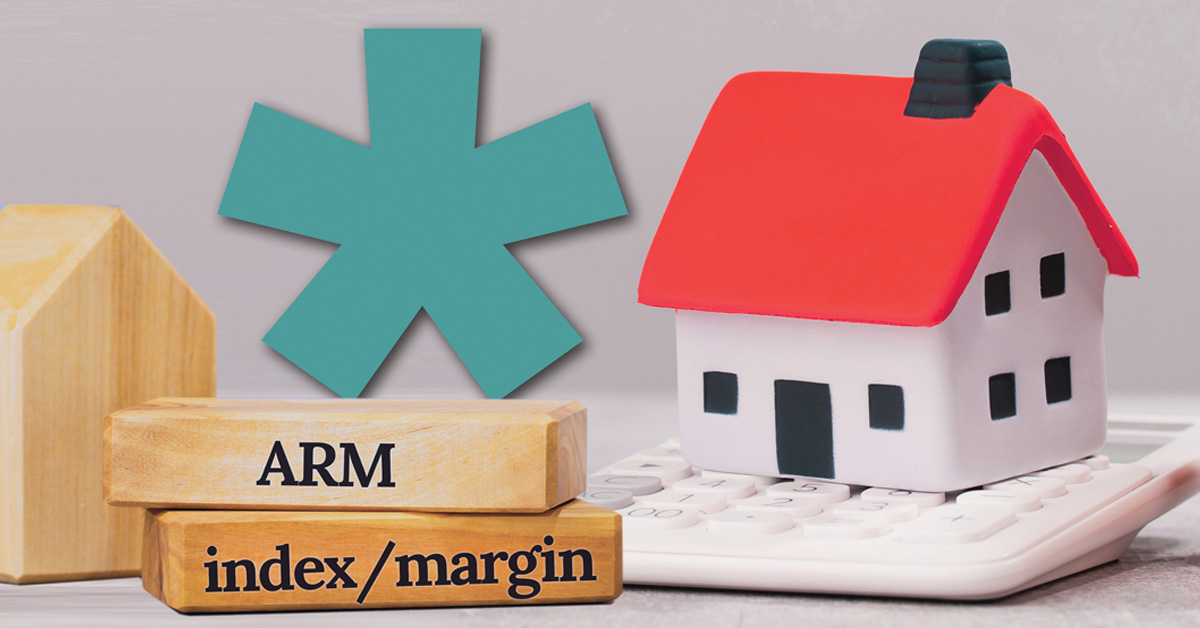The mortgage market can be subject to volatility, which means that interest rates can fluctuate over time. One type of mortgage that is particularly affected by market volatility is an adjustable-rate mortgage (ARM).
An ARM is a type of mortgage where the interest rate can fluctuate periodically, depending on market conditions. This arrangement can prove advantageous in certain scenarios since the initial interest rate offered by an ARM is usually lower than that of a fixed-rate mortgage. Consequently, at the start of the loan term, borrowers can benefit from reduced monthly payments.
The danger of these types of mortgages, however, is that the interest rate can increase significantly over time, which can result in higher monthly payments that the borrower may not be able to afford. In addition, with an ARM, the borrower is unlikely to have the stability and predictability of a fixed-rate mortgage. This can make it difficult to budget for monthly payments as the amounts can vary based on changes in the interest rate.
In general, opting for an ARM could prove favorable for individuals who anticipate residing in their home for a brief duration and possess comfort in handling the unpredictability of a variable interest rate. Nevertheless, if an individual intends to stay in their house for the long haul or prefers the stability of a fixed-rate loan, then an ARM may not be the most suitable choice. It is crucial to meticulously contemplate the benefits and drawbacks of an ARM before making a judgment on which type of loan to choose.
This is where a mortgage originator can shine. Originators in a market with elevated interest rates should consider telling their clients about ARMs, but they should also work hard to help clients understand all aspects of this type of financing. An ARM can be a great choice for some clients, but it’s important to help them understand the pros and the cons.
Excellent option
The chief benefit of an ARM is the lower initial interest rate. This can help make the monthly payments more affordable, especially in the first few years of the loan. This can be a big advantage for homebuyers who need to keep their monthly payments low in the early stages of homeownership.
Another advantage of an ARM is that if the interest rate drops, your client’s monthly payments may decrease. This can be a significant advantage if your clients plan to sell their home or refinance the loan in a few years.
Although an ARM can be an excellent option for some, it is crucial to consider the potential hazards before making a decision. The primary danger of an ARM is the ambiguity regarding future interest rates. The interest rate can change depending on the market index tied to the loan. Rate modifications can transpire annually or after several years, depending on the loan terms.
If interest rates rise significantly, an individual’s monthly payments also can increase substantially. This can pose a big problem for homeowners who have financial constraints.
Another risk of an ARM is the potential for negative amortization, which occurs when the monthly payments are not enough to cover the interest on the loan, and the unpaid interest is added to the principal balance. This can lead to a situation where the loan balance actually increases over time.
Worst-case scenario
When contemplating an ARM, it is critical to comprehend the potential risks and take actions to decrease them. One of the most effective methods to achieve this is to ensure that one can manage the worst-case scenario.
This implies that the borrower should be capable of making payments even if the interest rate soars by a significant extent. As a mortgage originator, work with your clients to understand this potential pitfall. Your clients want the home of their dreams, but it’s your job to make them realize the potential drawbacks of this purchase.
Another way to minimize the risks of an ARM is to make extra payments toward the principal. This can help reduce the amount of interest your clients pay over the life of the loan and lessen the risk of negative amortization. If your client can swing it, this would be a smart move for them and something that they’ll remember in the future.
To sum up, an ARM can be an excellent option for certain homebuyers, but it is essential to recognize the dangers involved. If your client is contemplating an ARM, it is vital to ensure they can afford the costs involved in a worst-case scenario and take steps to decrease the risks. By doing so, they can successfully weather mortgage market turbulence while navigating the benefits and dangers of adjustable rates. ●
Author
-

Houtan Hormozian is the co-founder of Crestico, a boutique real estate and mortgage brokerage in Los Angeles, revolutionizing real estate and mortgage lending with a focus on client needs and compliance. Hormozian is an entrepreneur at heart and a seasoned professional with nearly 20 years in the real estate and mortgage industry, and past President of the California Association of Mortgage Professionals. His expertise spans from sales to strategic market expansion and navigating regulatory landscapes. A thought leader, Hormozian contributes to major industry publications and is a Freddie Mac SmartCredit coach, influencing financial services and community initiatives alike.
View all posts







